
To facilitate music playback from mobile devices through in-car audio systems, users often resort to wired connections, which may necessitate various adapters due to differing mobile interfaces. Complications arise when attempting to connect during phone charging, as it obstructs interface access. A practical solution to circumvent these challenges involves integrating a Bluetooth module into the car audio system, thereby transforming it into a Bluetooth-enabled configuration.
The CSR64215 Bluetooth 4.2 audio receiver board is recommended for this purpose.
1. Overview of the CSR64215 Bluetooth Receiver Module:

Designed for retrofitting amplifiers, DIY amplifier setups, pre-amplifier effectors, and other audio devices, this module converts conventional wired transmission to wireless Bluetooth transmission. Employing the CSR64215 high-fidelity Bluetooth chip and Bluetooth 4.2, it ensures swift data transfer, allowing lossless conveyance of audio data to analog amplifiers, achieving wireless Hi-Fi audio quality. Supporting APT-X lossless reception, the module attains CD-level audio quality. Notably, it provides a genuine lossless Bluetooth reception experience, delivering standard single-ended analog audio signals directly to preamps or power amps without the need for an additional DAC decoder. For DIY enthusiasts, the module features an AUX input for seamless connection of linear audio, with switching between AUX and Bluetooth facilitated by an original NEC relay, ensuring the lossless output of AUX audio to power amps.
2. Detailed Image Information:

① DC power input interface, accommodating a wide voltage range of 6-36V, with GND for the negative pole and +12V for the positive pole.
② AUX audio interface, featuring LINE_INR for the right channel input, GND common ground, and LINE_INL for the left channel input.
③ Audio output interface, including R_OUT for the right channel output, GND common ground, and L_OUT for the left channel output.
④ Audio switch relay, utilizing an original NEC import to guarantee audio transmission and extended operational life.
⑤ On-board Bluetooth antenna for reception, with considerations for external antennas in metal chassis installations.
⑥ Bluetooth working indicator 1.
⑦ Bluetooth working indicator 2.
⑧ CSR64215 Bluetooth solution, supporting APT-X lossless signal reception.

The CSR64215 Bluetooth receiver module adheres to multiple protocols: APT-X, A2DPv1.3, AVRCPv1.6, HFPv1.6, HSPv1.2, and DIv1.3, satisfying the compatibility requirements of contemporary Bluetooth transmitting devices.
3. Key Advisory Note:
In instances where Bluetooth-induced minor background noise or interference is observed post-installation, integrating a separate low-power supply (6-36V, 500MA or above) dedicated to the Bluetooth module effectively mitigates noise issues. Shared power sources with other devices may introduce ground interference and noise.
In conclusion, while this module excels in quality and craftsmanship, it exclusively supports audio input and output, lacking buttons and microphone functionalities.
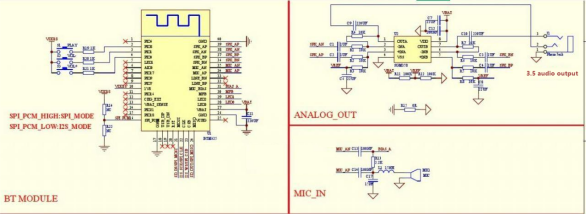
4. Installation and Modification:
For seamless button integration, refer to the provided Bluetooth module pin definitions. Button setup is straightforward, requiring a resistor and a micro switch.
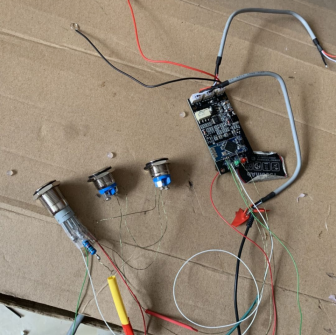

To incorporate this system into a vehicle, designate a location for a button, remove the cover of any obstructing buttons, cut openings to accommodate switches, and affix a carbon fiber film.

Extract the car's head unit, establish AUX connections, and source power from the head unit.
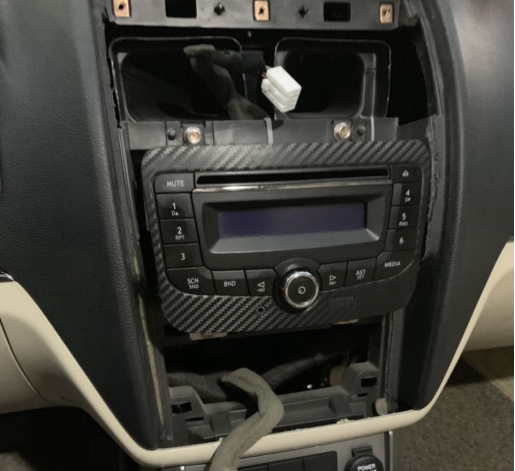

Given the Bluetooth version's automatic input switching capability, original car AUX input functionality can be preserved. This involves severing the original connection line and rerouting it to the input and output lines.

Bench testing involves connecting power and adding a 16V 2000 capacitor.
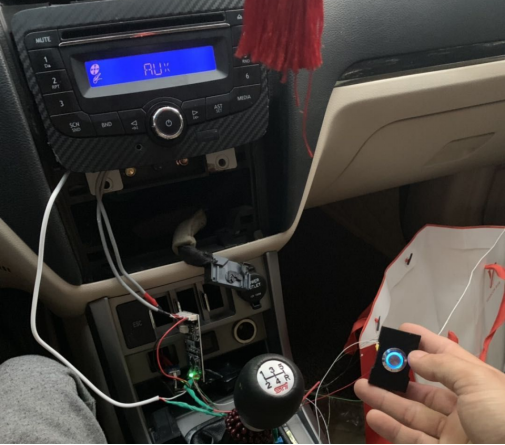
Button testing confirms functionality, with a preference for illuminated pause buttons. The reset switch exhibits superior performance.
Light indicators, linked to the Bluetooth board, convey different states through constant illumination or blinking.
It is important to note that the designated button cannot power off Bluetooth but is limited to pausing or initiating forced re-pairing. Consequently, a supplementary power switch is recommended.
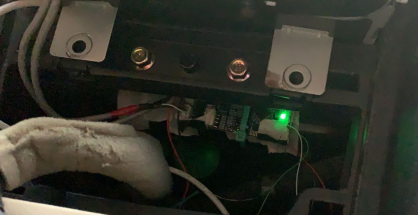
Secure the Bluetooth module by wrapping it with insulating tape and affixing it inside a steel pipe, providing additional heat dissipation benefits.

Upon completion, a visual inspection of the installation reveals a well-executed setup. The only discernible imperfection lies in the button's lower positioning.
Evaluation of long-term durability depends on the resilience of the connection line. Utilizing enamel-coated wire sourced from a DC motor enhances durability, particularly when configured as a dual-line with commendable strength.
Completion image





